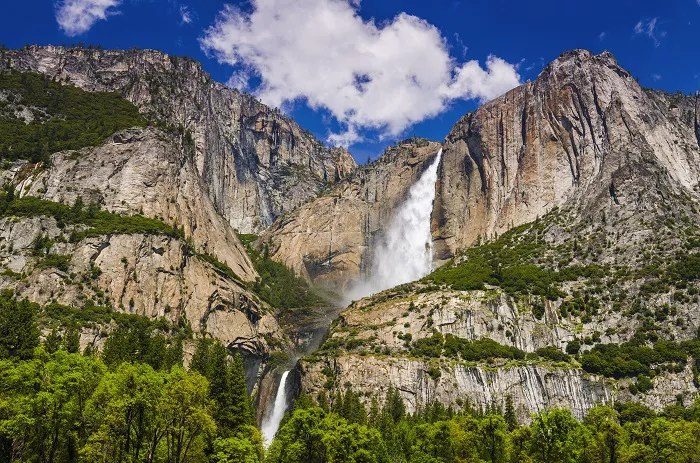As record-breaking visitation and budget constraints place increasing pressure on U.S. national parks, rangers are encouraging travelers to explore lesser-known areas to help reduce strain on infrastructure and preserve natural landscapes. With staffing shortages and mounting visitor numbers, these quieter corners not only offer relief to overburdened ecosystems but also promise more serene experiences for visitors.
While iconic sites like Yosemite Valley and the Hoh Rain Forest draw throngs of tourists, each of the 63 U.S. national parks holds secluded regions that remain largely undiscovered by the crowds. The following destinations showcase some of the best low-traffic areas within popular national parks—ideal for travelers seeking solitude, scenic beauty, and outdoor adventure.
Schoodic Peninsula
- Acadia National Park, Maine
Highlights: Tide pools, sea birds, coastal views
An hour east of the heavily trafficked Mount Desert Island lies the tranquil Schoodic Peninsula. This less-visited part of Acadia features rocky coastlines, rich tidepools, and quiet forested trails. The 1.2-mile hike to Schoodic Head offers sweeping views, while Blueberry Hill provides tidepool access teeming with blue mussels and periwinkle snails. Campers and picnickers will find solitude at Schoodic Woods Campground and Frazer Point.
Hetch Hetchy
- Yosemite National Park, California
Highlights: Waterfalls, backpacking, granite domes
Located just over an hour from Yosemite Valley, Hetch Hetchy offers an uncrowded alternative with striking scenery and easier access to walk-up wilderness permits. The area’s relatively flat 4.7-mile trail leads to Wapama Falls, while a longer, 13-mile round-trip trek rewards hikers with views of Rancheria Falls. The region’s granite cliffs and alpine tarns make it a favorite for backpackers seeking peace.
Kolob Terrace
- Zion National Park, Utah
Highlights: Red rock vistas, secluded hiking, sandstone formations
While Kolob Canyons have gained popularity, the Kolob Terrace remains a peaceful escape in Zion. The 4.2-mile Northgate Peaks Trail winds through conifer forests before culminating in panoramic views of the park’s red rock formations. Lodging is available at the remote off-grid retreat of Lazalu, located along Kolob Terrace Road.
Quinault Rain Forest
- Olympic National Park, Washington
Highlights: Forest hikes, wildlife, lakeside sunsets
Overshadowed by the Instagram-famous Hoh Rain Forest, the Quinault Rain Forest offers an equally lush but far quieter experience. Dense with moss-draped maples and frequented by elk and black bears, this western section of Olympic National Park is ideal for tranquil walks. The historic Lake Quinault Lodge serves as a perfect base for sunset views and rustic relaxation.
Cosby and Mt. Cammerer
- Great Smoky Mountains National Park, Tennessee
Highlights: Backpacking, waterfalls, forest solitude
Situated on the park’s eastern edge, the Cosby area boasts shaded campgrounds and remote trails. Hen Wallow Falls is accessible via a 4.3-mile hike, while more ambitious hikers can ascend Mount Cammerer for panoramic vistas. Wild turkeys and serene woodlands await those willing to step off the beaten path.
Two Medicine
- Glacier National Park, Montana
Highlights: Alpine lakes, paddle sports, Indigenous heritage
Known for its striking mountain views and cultural significance, Two Medicine is among the few Glacier locations retaining its original Blackfeet name. Dayhikers can explore Running Eagle Falls or take lakeside strolls, while backpackers can secure permits to camp at Upper Two Medicine Lake. Kayaking is also popular, and Sun Tours—an Indigenous-owned guide service—offers cultural insight and excursions.
Notom-Bullfrog Road
- Capitol Reef National Park, Utah
Highlights: Scenic drives, slot canyons, overlanding
For those seeking rugged beauty and solitude, Notom-Bullfrog Road provides striking views of the Waterpocket Fold. The road transitions from pavement to well-maintained dirt, threading past accessible slot canyons ideal for scrambling. Experienced hikers can venture into Lower Muley Twist Canyon, with free backcountry permits available. Visitors are urged to check flash flood forecasts before entering.
East Inlet Trail and Lake Verna
- Rocky Mountain National Park, Colorado
Highlights: Alpine lakes, waterfalls, long-distance hiking
Far from the crowded eastern entrances, the park’s western flank near Grand Lake offers access to the East Inlet Trail. A short walk leads to Adams Falls, while longer routes continue to Lone Pine Lake and Lake Verna, showcasing waterfalls and alpine scenery. The trail provides a quieter experience in one of Colorado’s most visited parks.
Dusy Basin
- Sequoia & Kings Canyon National Parks, California
Highlights: Backpacking, high-altitude lakes, mountain views
Rather than braving the crowds in Sequoia’s Giant Forest, outdoor enthusiasts can access Dusy Basin via the Bishop Pass Trail from South Lake. Reached through Inyo National Forest, this 12-mile round-trip trek traverses alpine passes surrounded by craggy peaks and crystal-clear tarns. Overnight permits are required and offer a gateway to some of the Sierra Nevada’s most awe-inspiring backcountry.
As America’s national parks face mounting visitor numbers and operational challenges, these off-the-beaten-path destinations provide a vital alternative. Not only do they ease strain on iconic areas, but they also offer travelers the chance to connect with nature in its most undisturbed form.

